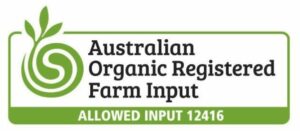Super-min® also has a Zero Carbon Footprint.
ERW (Spreading Super-min® on fields will remove vast amounts of CO2 from the air), is a part of the move towards regenerative agriculture that is gaining ground.
Known as enhanced rock weathering (ERW), the process involves spreading crushed rock onto soil. ERW could help slow climate change by sucking carbon dioxide from the atmosphere. This process when rocks, such as Super-min® and other silicates, are crushed and added to the soil, they dissolve in rain water, carbon dioxide is drawn from the atmosphere into the solution to form bicarbonate ions which lock in the carbon dioxide, and essential nutrients are released for plants.
The chemical reactions that degrade the rock particles lock the greenhouse gas into carbonates within months, and some scientists say this approach may be the best near-term way of removing CO2 from the atmosphere.
In nature, this takes millions of years. Rain, which is slightly acidic, chemically breaks down rock in a process that converts carbon dioxide to bicarbonate, which eventually washes into the ocean where it’s stored for hundreds of thousands of years. This natural process absorbs about 3 percent of global emissions from fossil fuels. By pulverising the rocks, turbocharges the process, allowing the minerals to be released, faster and to store more carbon within several years.
The particle size testing of Super-min® has shown that the rock grain sizing is very suitable to absorb CO2 from the atmosphere.
Chemical aspects:
The process of rock weathering involves a series of chemical reactions. First, the hydration of CO2 forms carbonic acid.
Equation (1): CO2 hydration (1)
CO2+H2O⇋H2CO3
This weak acid breaks down silicate rock, which releases base cations (e.g. Ca2+, Mg2+) and bicarbonate and carbonate ions in proportion depending on pH. The weathering of silicate minerals is commonly represented using the calcium silicate minerals in the mine tails (CaSiO3), and releases bicarbonate ions.
Equation (2): Weathering of (2)
CaSiO3+2H2CO3→Ca2++2HCO3−+SiO2+H2O
Following Equation (2), when the dissolved bicarbonate ions are then transferred to the ocean and contribute to its alkalinity, two moles of CO2 are captured per mole of calcium (content depending on the rock). This path will be herein referred to as enhanced weathering (EW).
Equation (3): Enhanced Weathering (EW)
CaSiO3+2CO2+2H2O→Ca2++2HCO3 (to Ocean) −+SiO2+H2O
However, when soil conditions are favourable, some of the calcium and magnesium cations can precipitate to form carbonate minerals which accounts for half the moles of CO2 captured during the weathering of the rock.
Equation (4): Carbonate mineral formation (Carbonation)
CaSio3+2CO2+2H2O→Ca2++2HCO3−+SiO2+H2O
Ca2++2HCO3−↔CaCO3 (in soils) +CO2+H2O
The capture potential of each path (i.e. Carbonation and EW) depends on the type of rock used. Minerals in ultra basic rocks, such as the Super-min® weather relatively quickly and show a high potential for CO2 sequestration.
Research has shown the rock dust approach (ERW) has several advantages. Many farmers already add limestone dust to soils to reduce acidification, and adding Super-min® improves fertility and crop yields, meaning application could be routine and desirable.
Super-min® as is basalt is preferred for ERW as it contains the calcium and magnesium needed to capture CO2, as well as silica and nutrients such as potassium and iron, which are often deficient in intensively farmed soils.
When farmers apply the powdered rock onto croplands, they’ll see added benefits, increased plant nutrients leading to higher yields and a potential drop in fertilizer and pesticide use, which will also help to reduce CO2 emissions.
While enhanced weathering could make an enormous contribution to climate change mitigation, it remains one of the most poorly understood methods of removing CO2 from the atmosphere. Given that carbon emissions are a big problem for the entire world, this technique might just be the light at the end of the tunnel. With further research this enhanced rock weathering technique seems affordable and practical, making it a win-win.

